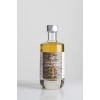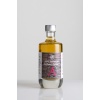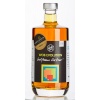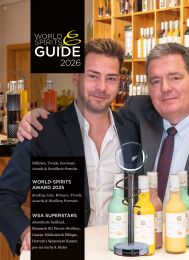
Table of Contens
- What Parfum de Vie is and how it is made
- Why purity matters: When to use a distillate instead of a sauce
- Pairing suggestions: Which distillate with which dish
- How to apply distillates in the kitchen
- Examples of dishes and applications
- Practical considerations for chefs and home cooks
- Resources and where to find recipes and products
- Philosophy: Less is often more
- Common mistakes to avoid
- What exactly is Parfum de Vie?
- How should Parfum de Vie be used in cooking?
- Which distillates pair best with fish and seafood?
- Can distillates be used in sauces or cooked preparations?
- Where can one find recipes that use Parfum de Vie?
- Final note
Parfum de Vie 71 enhances your dishes: The pure essence for cooking
Parfum de Vie 71 enhances your dishes by introducing pure, fermented and distilled fruit essences that elevate minimalist cuisine. These 100 percent distillates are not liqueurs, not artificial flavors and not rum. They are concentrated aromatic spirits derived from fruit fermentation and distillation, designed to pair with pristine preparations where every ingredient is allowed to shine.
What Parfum de Vie is and how it is made
At its core, Parfum de Vie is a class of aroma distillates. Each expression starts with a fruit. The fruit is fermented and then distilled to capture its volatile aromatics in an exceptionally pure form. The result is a clean, transparent distillate that carries the character of the original fruit without added sugars, artificial flavors or other additives. Because of that purity, Parfum de Vie enhances your dishes in ways that conventional flavoring agents cannot.
These distillates are intentionally different from culinary liqueurs. They are created with the specific goal of aroma enhancement rather than sweetness or alcohol-forward flavor. The lack of added sugar or other masking components gives chefs the freedom to apply a focused aromatic accent to delicate preparations.
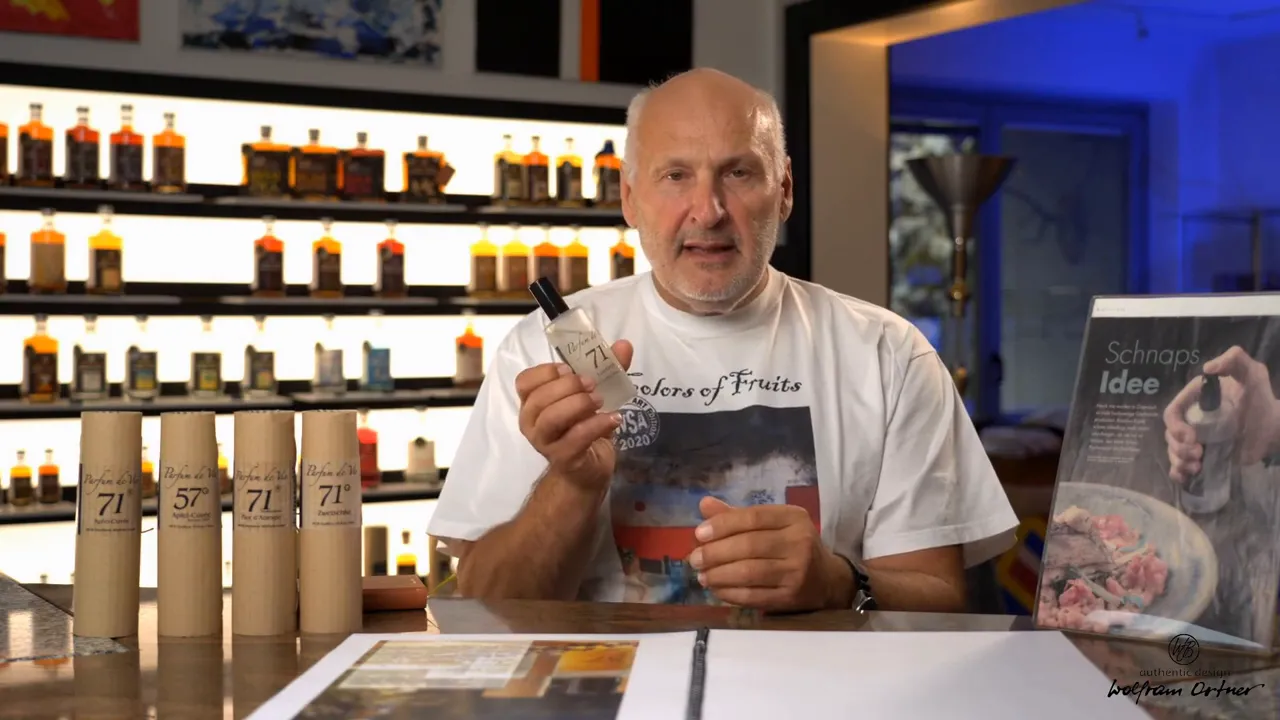
Why purity matters: When to use a distillate instead of a sauce
The guiding principle behind using Parfum de Vie is minimal intervention. The distillates work best with puristic dishes where fewer components allow a single aromatic note to become expressive. Examples include raw fish, seafood like scampi, and premium cuts of meat prepared simply.
Parfum de Vie enhances your dishes most effectively when the culinary canvas is restrained. A heavy sauce, rich glaze or complex marinade can mask the subtleties of a 100 percent distillate. On the other hand, a naked ingredient—sashimi, lightly seared steak, or chilled shellfish—will reveal how a targeted aroma can transform perception, accent flavors and add elegant lift.
What puristic means in practice
- Raw fish: Thin slices seasoned with a whisper of salt and a few drops of a floral or fruity distillate.
- Raw scampi: Garnished with a single aromatic note to highlight sweetness and freshness.
- Premium steak: Seared to preferred doneness and finished with a complementary wood- or fruit-derived distillate for aromatic complexity.
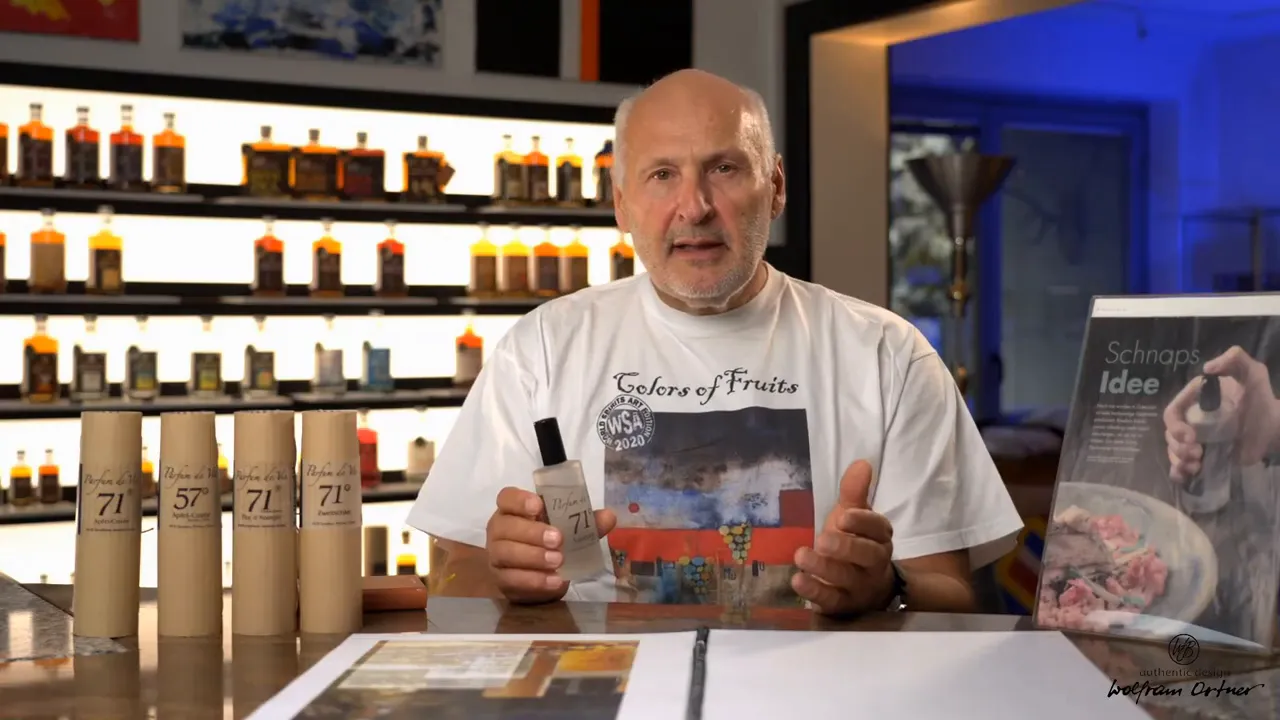
Pairing suggestions: Which distillate with which dish
Choosing the right Parfum de Vie expression is a matter of harmony and contrast. A few tried-and-true pairings demonstrate the logic.
- Lavender distillate pairs beautifully with delicate white fish and raw shellfish. Its floral character lifts marine sweetness without overwhelming the palate.
- Grape distillate complements raw seafood and light vegetable preparations. The vinous, fruity notes echo natural sweetness and acidity.
- Apple distillate provides crispness and a fresh fruit brightness that works on raw shellfish and on dishes that benefit from a lean, fruit-acid edge.
- Plum distillate or applewood distillate suits meat courses. Plum adds a sweet-tart depth, applewood brings soft smoky, woody aroma for seared cuts.
These are not strict rules. The idea is to think of Parfum de Vie as a fine perfume for food: it should harmonize with texture and inherent flavors, not cover them.

How to apply distillates in the kitchen
Working with 100 percent distillates calls for restraint and precision. A few practical guidelines:
- Start small. Use a pipette, spray or spoon to add one or two drops at a time. Distillates are concentrated; a little goes a long way.
- Apply late. Add the distillate just before service to preserve its volatile aromatics. Heat will dissipate the delicate top notes quickly.
- Pair by textural contrast. A volatile floral or fruity note can accentuate the silkiness of sashimi or the caramelized crust of a steak.
- Test on a small portion. Because every ingredient and preparation is different, trial and tasting ensure the balance is right.
When the dish is puristic, Parfum de Vie enhances your dishes with clarity rather than complexity. It is a finishing tool rather than an ingredient to be cooked into heavy sauces.

Examples of dishes and applications
Examples help turn abstract ideas into usable practice. Consider these illustrative applications.
- Raw scampi: Plate thinly sliced scampi, season lightly with sea salt and a touch of neutral oil. Finish with two or three micro-drops of lavender or grape distillate to add an aromatic lift that complements the shellfish’s sweetness.
- Simple crudo: Thinly sliced white fish, citrus zest and a pinch of salt. Add a single drop of apple distillate to bring forward fruit-acid brightness without changing texture.
- Seared steak: After resting, spritz the meat with a few drops of applewood or plum distillate to give the crust an evocative scent that plays against the meaty flavors.
These applications underline a simple rule: use the distillate to enhance aroma and accentuate inherent flavor, not to mask or replace it.
Practical considerations for chefs and home cooks
Working with concentrated distillates requires a slight shift in mindset. They are not bulk flavoring agents. They are finishing elements, best used to add nuance and complexity to minimal preparations.
- Storage: Keep distillates in a cool, dark place to preserve volatile compounds.
- Dosage: Measure conservatively. Start with single-digit drops for a plated portion, then adjust.
- Pairing tests: Match by aroma family (floral, fruity, woody) and by the dish’s intensity.
- Intended audience: Ideal for fine-dining, tasting menus, and anyone who values restraint in seasoning.
When employed correctly, Parfum de Vie enhances your dishes in surprising and refined ways, drawing attention to what already makes the ingredient special.
Resources and where to find recipes and products
For cooks seeking inspiration and practical recipes designed around distillates, curated recipe collections and cookbooks focused on minimal technique are excellent resources. Detailed guides explore how aromas interact with textures and flavors and provide step-by-step pairings for fish, shellfish and meat.
For those who want to experiment, a trial-sized bottle and a simple recipe focusing on a single ingredient are the best starting points. Try a raw seafood dish with one complementary distillate and refine from there.
Philosophy: Less is often more
The underlying philosophy is culinary minimalism. Fewer components make it possible to hear the voice of each ingredient. In that context, Parfum de Vie is an instrument of enhancement: it clarifies and elevates rather than competes.
Pure 100 percent distillates are created through the fermentation and distillation of fruit; they are defined by their purity and used to aromatize primarily puristic dishes.
That purity is the reason why Parfum de Vie enhances your dishes so effectively. Because the distillates are unadulterated, their aromatics remain distinct and expressive when applied to simple preparations.
Common mistakes to avoid
- Overuse: Using too much will dominate the dish and erase the ingredient’s character.
- Cooking away the aroma: Applying distillates early in the cooking process can dissipate their volatile notes. Finish dishes with the distillate.
- Mismatching intensity: Pair subtle distillates with bold, sauced dishes and they will be lost. Reserve distillates for restrained preparations or use stronger expressions for hearty foods.
Adhering to these guidelines ensures that Parfum de Vie enhances your dishes in a way that feels deliberate and refined.
Final note
Parfum de Vie is a tool for subtlety. It reframes the idea of seasoning by offering targeted aromatic accents that respect and amplify the ingredient. When applied with care and restraint, Parfum de Vie enhances your dishes by creating moments of aromatic clarity and depth. The results are often surprising: a familiar bite suddenly feels more focused, more complex and quietly memorable.
Top Seller
FAQ - Häufig gestellte Fragen
Look for recipe collections that emphasize minimal technique and ingredient-focused cooking. Test recipes designed for raw or simply prepared fish and meat to understand how the distillates behave in practice.
Distillates are less effective in heavy sauces because heat and strong components can mask their aromatics. They are most successful applied to minimal dishes or added at the end of cooking when heat will not strip volatile aromas.
Floral and fruity distillates such as lavender, grape and apple are excellent choices for fish and seafood. They accentuate natural sweetness and introduce a bright aromatic note without masking the ingredient.
Use Parfum de Vie as a finishing aroma. Apply sparingly—usually one to a few drops—just before serving. It works best on puristic preparations such as raw fish, scampi and premium cuts of meat that are simply seasoned.
Parfum de Vie is a line of 100 percent fruit distillates created by fermenting fruit and then distilling the aromatic compounds. They contain no added sugars or artificial flavors and are intended as aromatic finishing elements for food.




